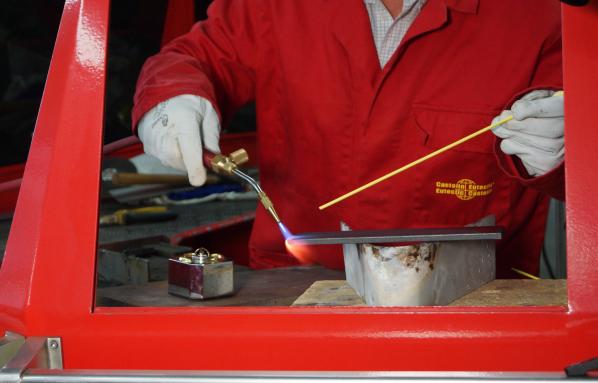Brazing is the process of joining metallic parts together with the help of a filler substance. The filler materials, in case of brazing, usually need to have a melting temperature higher than 450 degrees Celsius. Other methods of fusing metals are soldering and welding. We can join only similar metals with welding. Soldering needs a lower temperature than that brazing. Among the three methods, welding requires the highest temperature.
The above was basic info regarding brazing. Now, we shall look into the thoughtful ways of brazing stainless steel. They have high tensile strength, offer resistance to corrosion, and look clean and smooth. These properties make stainless steel the best choice for various applications. But one has to learn the techniques of brazing the material before using it.
Steel is an alloy of iron and carbon. It has around ninety-eight percent of iron, whereas in stainless steel, metallic elements like chromium, nickel, molybdenum, etc. are present in addition to steel. These metals can quickly form oxides and carbides upon heating. It further leads to softening or embrittlement of the steel. It may even lose its corrosion-resistant nature. Thus we need to prevent oxide formations while brazing stainless steel. The process requires a suitable flux and a protective environment.
Different methods of brazing stainless steel:
Brazing in the open air:
Here a filler material having a lower melting point forms a capillary connection between the disjoint parts. It should be capable of dissolving the oxides that the base material produces while heating the surface. It should also gel well with the base compound. Often a torch of hot gas is the heat source. For small-scale production and easy-to-access parts, one could hold the torch flame and proceed with brazing manually. We also have fully automatic machines for this purpose.
The filler material comes in the form of brazing rods, ribbons, creams, and even in powder form. Silver base and Nickel base compounds are the filler materials. The flux, made of compounds of silver or boron acts as a protection layer for the stainless steel and the filler material.
We need to apply adequate quantities of flux before heating and should be able to remove the excess material easily after the brazing. As brazing is done in the open air, the quicker the process, the better is the outcome. Moreover, we have to take care that the brazing temperature does not become too high as it could cause fragilization.
Furnace Brazing:
Inside a brazing furnace, it is possible to control the temperature and atmosphere for the desired time duration. The heat required is dependent on the chemical atmosphere, the filler materials used, and the type of steel. While brazing in a typical environment, there is always a possibility of oxide formation.
In furnaces, we can have a reducing atmosphere. For example, by using hydrogen, it is possible to remove the oxygen part from the oxides formed on the steel surface. Oxygen on combining with hydrogen forms water. So, one has to control the amount of water vapor too. Its saturation and presence of excess oxygen can stop the reduction process.
Manufacturers deploy various techniques such as curtain boxes, door opening designs to regulate the furnace condition. Here copper-based alloys act as filler materials. Furnace brazing is the most economical way to produce large-scale, high-quality stainless steel joints and products. Furnace brazing is applicable for making aerospace and automotive parts.
Vacuum brazing:
It is a high-end technology for producing quality joints for lightweight assemblies. The products also offer excellent thermal resistance and have high mechanical strength too. As the brazing process occurs in a vacuum, and there is no chance of oxidation. There is no need for protective flux material. We need to apply only the filler material or the braze alloy on the stainless steel parts before heating.
As the braze alloy melts first, it fills the gap between the two portions of the base steel and forms a strong joint. Once cooled, we can perform a helium leak check on the brazed assembly. The inert gas not only checks the condition of joints but also cools the filler material. The process requires high temperatures around 1000 degrees Celsius. Oil coolers and reduced-weight components for defense industries are manufactured using the vacuum method.
Irrespective of the type of brazing, we need to take some precautionary measures for brazing. For example, the surface of the components has to be free from dust, debris, and oxides. We have to remove the residual flux after brazing. So, final cleaning, using water, or other chemical means is a must.
Brazing is a way to achieve smooth and clean joints. We can get leak-proof, ductile, and corrosion-resistant final products. As the base compound does not melt, it does not undergo thermal distortion. It can be used for complex, multi-part assemblies.

